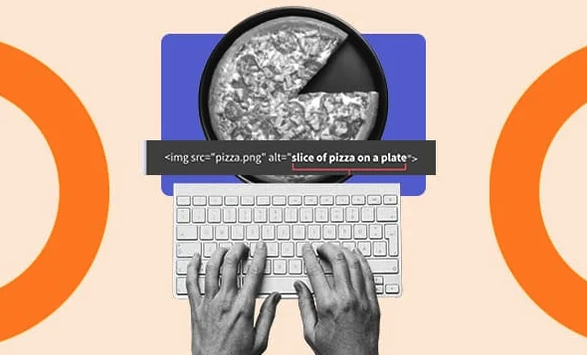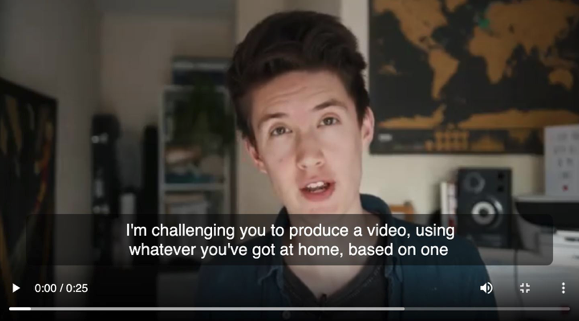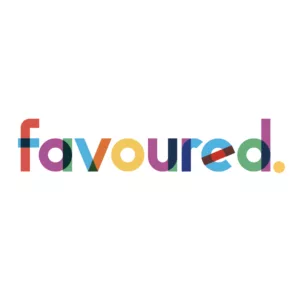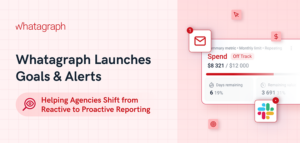Inclusive Social Media Content: How To Reach All Audiences
Inclusive social media content considers the diverse needs of all audiences, including users with different first languages, cultural backgrounds, dietary requirements, or disabilities such as sight loss.
When creating social media posts, videos, captions, or stories, you must consider the reading and listening experience of all audiences. This gives users a sense of belonging and involvement within your brand, despite their differences or needs.
Solvid lists tips on how to reach all audiences and grow your brand with inclusive social media content.
Reach All Audiences & Grow Your Brand: Inclusive Social Media Strategies
Use Inclusive Language
Inclusive language isn’t just about being politically correct; it’s about making everyone feel valued and heard. It’s like speaking in a way that welcomes everyone to the conversation.
To respect all audiences, you should avoid using:
- Sexist expressions such as “boys will be boys”.
- Gender-biased language like “woman doctor” – they are just doctors.
- Generalisations or assumptions that could alienate or offend your audience. For example, please don’t assume all your customers define themselves as one gender; instead, try using gender-neutral pronouns.
- Cultural references, idioms, or phrases that may translate poorly in other languages or be misinterpreted by different audiences.
Kate Meyers Emery, senior digital communications manager at Candid, said: “A great tool for this is WittyWorks, a browser extension that alerts you to possible issues with the words you’re using. While you’ll still need to keep your own knowledge up to date, the tool can help you rethink how you’re using language.
“Things like Harvard’s Implicit Bias testing tools can also be useful for understanding your own bias and how it may impact your writing.”
Consider The Readability
It’s essential to consider the readability of your content, including your words and font styles, sizes, and colours.
Here are some readability tips to think about:
- Studies show that fonts such as Arial, Tahoma, and Verdana are more readable for those with dyslexia.
- In addition, fancy fonts are not clear enough for screen readers to read.
- Use abbreviations and acronyms carefully, as these can confuse some readers.
- aLtErNaTiNg cApS reads as gibberish for screen readers.
- Screen readers cannot understand the context of using ALL CAPS.
- Don’t replace letters with asterisks (*) as they interrupt the flow for screen readers.
You can check the readability of your social media content with Hemmingway Editor or Readable. Aim for Grade 8 or lower to comply with WCAG standards.
Add Alt Text And Descriptions
At least 2.2 billion people across the globe have vision impairment, including blurred vision and colour blindness.
All images should include a written description, known as Alternative Text (Alt Text). This allows assistive tools like screen readers to narrate the description to those unable to see the image.
Here are some excellent tips for writing Alt Text:
- Describe what’s actually in the image. For example, ‘a golden retriever puppy drinking from a pink water bowl’ – not ‘image of a dog drinking’.
- Don’t include ‘image of’ or ‘photo of’ in Alt Text.
- Alt Text doesn’t have to be formal and should explain any humour or jokes conveyed in the image.
- If the image has text that is central to its meaning, include it in the Alt Text.
- It takes longer to narrate Alt Text than to read it, so keep it concise for those using assistive tools.

In addition to Alt Text, images and videos should also have detailed descriptions in the captions of social media posts. These should include the features and identities of the people in the visual, the patterns and colours of their clothing, and details of their surroundings.
Add Video Subtitles
By 2050, nearly 2.5 billion people are expected to have some degree of hearing loss, making subtitles and captions a priority on social media videos.
Subtitles also enhance the viewing experience for users who don’t speak English as their first language or those watching in sound-off environments. In fact, 83% of US users watch content with sound off.
Auto-captions are available and easy to add on most social media and video hosting platforms, but ensure you check the text for correctness, spelling, and punctuation. Here are some other things to check:
- Make sure that captions are not covered. For example, the side panels on TikTok, the username and caption on the bottom of Instagram Reels, or the message field on Instagram Stories.
- Ensure you’ve used a high-colour contrast for captions so that they can be easily read over video visuals. You can use free tools like TPGI’s color contrast analyzer to check your colours.
There are two types of captions. Open captions are part of the video, while your audience can turn closed captions on or off.

Consider Your Hashtags
Instagram posts with at least one hashtag gain 12.6% more engagement than those without, highlighting the importance of hashtagging social media content.
However, there are some ways to keep the hashtag inclusive for all audiences:
- Using the Pascal Case, capitalise the first letter of every word in your hashtag so that screen readers can read them properly. For example, #InclusiveSocialMedia, not #inclusivesocialmedia.
- You can also use Camel Case, which is similar, except you don’t capitalize the first word in your hashtag (e.g., #inclusiveSocialMedia). For some hashtag examples, consider using a mix of broad and specific terms relevant to your target audience.
- Only add hashtags at the end of a post caption, as hashtags in the middle of a sentence are disruptive when being read by the top assistive tools.
- If you must use large groups of hashtags, add them as a social media comment rather than at the end of your caption.
Limit The Use Of Emojis And Memes
Emojis and memes are a huge part of social media in 2024, but unfortunately, they aren’t inclusive to all audiences – especially those who are visually impaired.
Some emojis lose their context when interpreted through assistive tools like screen readers, which read the emoji’s name. For example, the popular emoji with three stars (✨) will be read as “sparkles”.
Memes, which are often created as text overlays on images, can be even worse. Even if the meme includes alt text, it may be hard to describe the punchline through text alone.
Julia Métraux, disability and public health journalist at Mother Jones, said: “Memes that involve using all uppercase letters aren’t accessible to people who use screen readers, who are blind or have low vision. It just spells the letters out like an acronym.”
Here are some tips to make emojis and memes as inclusive as possible if you plan on using them in your social media content:
- When adding alt text to memes, be as descriptive as possible of the content and context, then explain the joke or humour.
- ASCII art memes, like this one from Domino’s, can be very confusing to understand when narrated by assistive tools. If you want to participate in the trend, share the ASCII art as an image (rather than writing it directly into the post) and describe it in the alt text.
i’m just gonna take ur opinions about pineapple
— Domino's Pizza (@dominos) March 10, 2023
💭
\(´・_・\)
( )
く く
and put them in the garbage
( ´・_・`)
(\ )\
> > 🗑️
- Don’t add emojis to the beginning or middle of a sentence or caption, as this is disruptive when being read by assistive tools.
- Repeated emojis can be time-consuming when narrated by assistive tools, so try not to use more than three in a row.
Wrapping Up
Incorporating inclusive content into your social media strategy will help enhance your brand’s reputation, connect you with a broader audience, and foster a sense of community and belonging.
However, it’s pronounced when your intentions are superficial. So, being genuine with your inclusive content is essential, not just performative.























